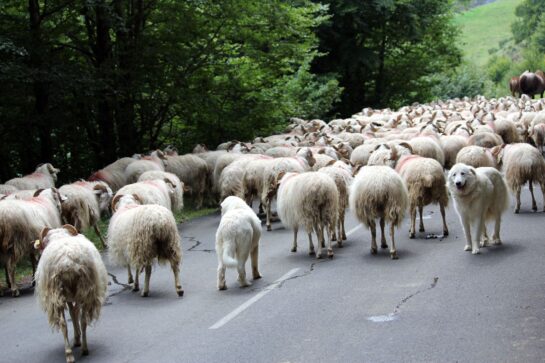
If it seemed like a good idea at the time, it made a difference. where you stood in proximity to a sheep.
In an effort to restore the centuries-old brown bear population in France which had dwindled down to near extinction by the 1990s, the European Union mandated the introduction of bears to that country.
French shepherds and farmers were horrified. They saw the dictate as an effort by “know-it-alls” living in the big city of Paris to comply with regulations created by people who didn’t even live in their country. People they never met were unlikely ever to see the carcasses of their sheep that were being eaten in big numbers. They wondered if tourism connected with bear watching was worth their personal losses.
Bear attacks on sheep increased 46% in 2017 compared with 2016. While more bears were being trucked in from Slovenia to bring the bear population to 43 a year later, shepherds lamented the loss of animals that were like family to them. They said that the opportunistic Slovenian bears were more prone to eat their sheep than native French bears from years before, and worse, the way the bears feed was disturbing. The bears didn’t always killed the sheep and start feeding while the sheep was still alive. One shepherd said it was like seeing one’s dog being eaten.
The reintroduction of bears to the central Pyrenees stimulated a renewed interest in Livestock Guardian Dogs, and at one point, local shepherds were given grants by the EU to buy extra “pastous” or “patous” (the le Montagne des Pyrénées, or Great Pyrenees to English speakers) to mix with flocks and assure their protection. As a result, most flocks found in France today have around four or five of the dogs keeping an eye on them. Their presence and large size discourages the predators, and if the dogs’ bark doesn’t warn off the interloper, the dog will put him or herself between the sheep and the intruder. Put another way, the Great Pyrenees is not an attack dog but protects by dissuasion.
By the way, do you know how to act around a working Livestock Guardian Dog? A lot of us are out hiking, backpacking, and mountain biking, and in certain parts of the country, this may put you in proximity to an LGD doing it’s job. We strongly suggest you read this post that includes a video on what to do, and not do.

plusieurs chiens des pyrénées sont efficaces contre loups & ours contre les moutons ou brebis